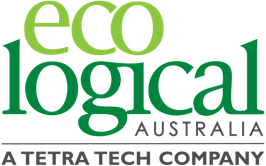Meet Jet - The Koala-detecting Dog
Wednesday, 1 May, 2019

With their round fluffy ears, big shiny noses, and shy, sleepy disposition, the koala is recognisable around the world. Despite being known as one of Australia’s most iconic (not to mention cutest) animals, the species is actually listed as ‘vulnerable to extinction’, and there are a number of habitat protection measures in place across the country.
Often found nestled dozing in Eucalypt trees, koalas can be tricky animals to find. Indeed this was the case for Martin Sullivan (ELA Principal Ecologist) on a recent project in regional New South Wales. So he employed a somewhat alternative approach to finding our furry friends.

Enter Jet, the wildlife conservation detection dog. While he might be the smallest member of this project team, what he lacks in size he makes up for in smarts (and fluff). Jet has been trained to detect yellow crazy ants, foxes, feral cats, and, of course, koala scats (or droppings).
Martin decided to bring Jet on board with one particularly tricky koala habitat case. Usually finding koala droppings is labour intensive and often unsuccessful, despite the presence of koalas. Jet the koala-dog relies on his powerful sense of smell and his love for a game of ‘sniff-it-out-score-a-ball’ to find a koala habitat. Each time Jet successfully locates a koala scat his handler Craig rewards him with a throw of a ball or a tasty treat.
“The coverage you get is much greater, it’s clear Jet’s working on a different wavelength” explains Martin, who went out in the field with Jet to watch him in action. “In the time it would take us to look and be sure there’s no scats under a single tree, [Jet] would have already sniffed all the trees in the immediate area and known there’s nothing there.”
Jet has already proven to be an efficient alternative to traditional (and adorable) koala survey methods - which can be expensive and lengthy. “The cost of sending out the dog was cheaper than sending out two ecologists, and I know we’ve got the data we need,” explains Martin. “It’s a great way of doing it very quickly and with a high degree of accuracy.”
While Eco Logical is always on the lookout for ways to improve survey methods, it’s not very often that these techniques date back as far as this valuable relationship between man and his best friend. “Usually we’re using drones or 3D mapping technologies – so this one is a bit different to what we’re used to seeing in terms of innovation!” laughs Martin.
Koala Image credit (CC BY 2.0) Flickr, col&tasha
